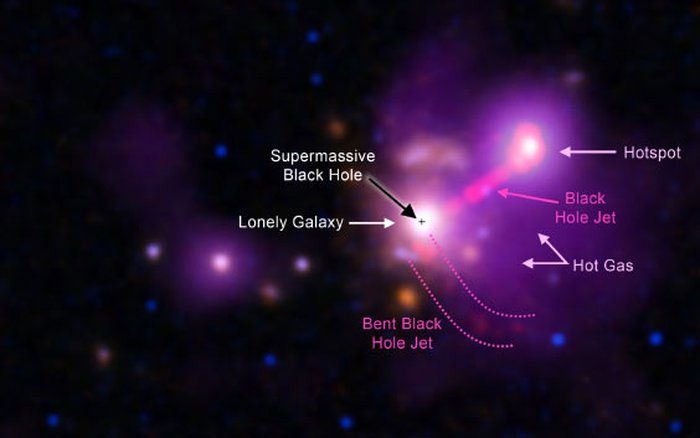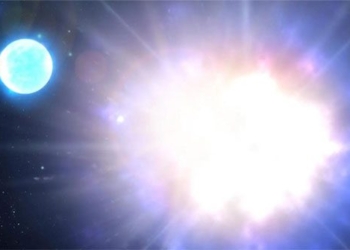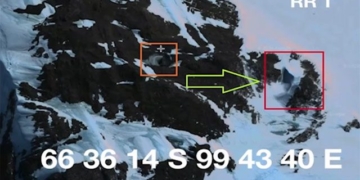In a bizarrely empty region of the Virgo constellation, scientists have discovered something even more ferocious than the “monsters” that hold Earth.
3C 297 may be the loneliest galaxy in the universe ever recorded by scientists. It was discovered thanks to a “beating heart” of a quasar shining brightly – a supermassive black hole voraciously consuming matter to the point of shining like a star.
According to Sci-News, the environment in which the galaxy 3C 297 exists has all the main characteristics of a galaxy cluster, which contains hundreds or thousands of densely packed galaxies.

The quasar heart of the “monster” galaxy 3C 297 shines brightly in radio light – (Image: NASA)
However, the galaxy before astronomers, “transcending time” from a world 9.2 billion light-years away and from a past 9.2 billion years ago, appearing in data from NASA’s Chandra X-ray Observatory and the international Gemini Observatory, is strangely alone.
A research team led by Dr. Valentina Misaglia from the University of Turin (Italy) deeply analyzed data from Chandra and found that this solitary and massive galaxy is surrounded by a vast amount of gas at tens of millions of degrees, a phenomenon typically seen in galaxy clusters, not in an isolated entity.
Data from another international observatory, the Karl G. Jansky Very Large Array, further showed that radio waves were bent, evidencing interactions with the surrounding environment, which is characteristic of galaxy clusters.
Ultimately, they arrived at a chilling conclusion: 3C 297 is not an ordinary galaxy but a form of “monster” never before seen. It has consumed all the surrounding galaxies, creating a colossal and powerful merged entity. What scientists are observing is the final stage of a merger.
Massive galaxies like the Milky Way (the galaxy containing Earth) also swallow many surrounding galaxies to grow to their current size, but a galaxy becoming so isolated as to resemble 3C 297 is a rare occurrence in the universe, especially at a time when the universe is only 4.6 billion light-years old.
“This not only breaks our understanding of cosmology, but it also begins to push the limits of the rate of formation of galaxies and galaxy clusters,” stated Dr. Mischa Schirmer from the Max Planck Institute for Astronomy (Germany), a co-author of the study.
Previously, several recent scientific discoveries have indicated that the early universe developed faster than we imagined, including the process of galaxy mergers that may have occurred much earlier than prevailing theories and models suggest.
The new research has just been published in the scientific journal Astrophysical Journal Supplement Series.





















































